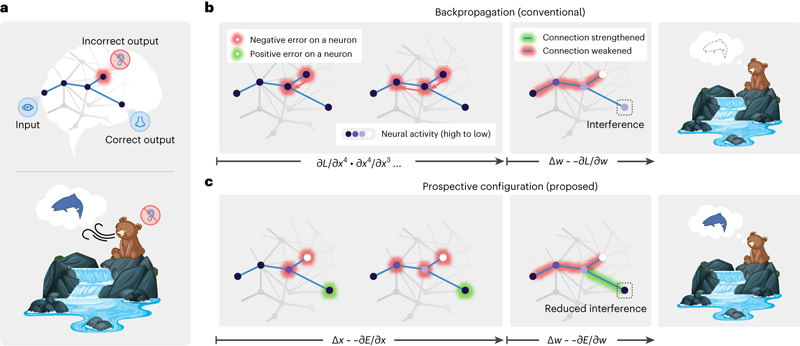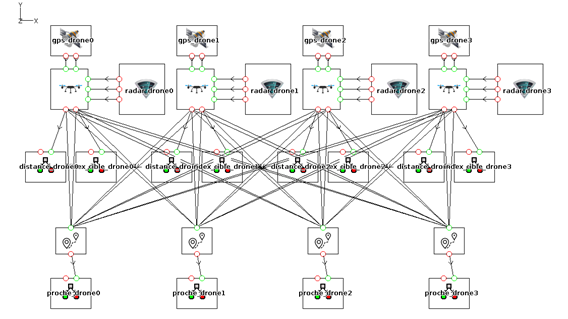A paper from Oxford University researchers (link) demonstrates the human brain capacity on deep learning neural network. First, human needs only to see a couple of images to understand and memorize for the entire life. Where the deep learning requires thousands and thousands of images to train a partial recognition capacity.
But this paper highlights the huge superiority of human brain to learn additional knowledge and integrate them into its processes without any negative impact on the previous knowledge. The new learning in a neural network drive interference with the existing one and will downgrade them.
The human brain will create new connections to operate and manipulate the new information learnt.

Fig. 1: Prospective configuration avoids interference during learning by Song, Y., Millidge, B., Salvatori, T. et al. Inferring neural activity before plasticity as a foundation for learning beyond backpropagation. Nat Neurosci (2024)
Hybrid AI runs as the human brain
Our hybrid AI built to draw near the human brain and its processing is able to integrate in real time new information, knowledge and process to enhance the system without any negative impact on the precious process.
First, in our formalism, each neuron being independent and identical, they can take care of back-propagating their errors independently of their layers of membership. Thus, we can carry out different learning inside the neural network, which allows us to evolve only a sub-part of the network according to needs.
Secondly, we can also create RNNs and take time into account. These network architectures are quite natural given the K-Net/Think formalism which already takes time into account with the propagation of data in the network.
All these networks created and trained can be saved and reused in the formalism in the form of small independent knowledge. This makes it possible to give meaning to each part of a larger neural network and thus explore very large neural networks more simply by knowing which parts participate in the creation of the whole.
And thirdly, our K Net no code interface allows experts to model in real time new connection in a knowledge base (operational AI App), change or remove connection and associate several knowledge bases together to improve the capacity of the IA to support decision-making in real time. Under: a K Net example of knowledge base connection to run an autonomous drone swarm.

Fig 2: K-Net no code HMI (Infinit AI)
We have created knowledge base to drive a drone based on physical information (radar to fix target, GPS coordinates…) and the mission request modeling. Then, just by duplication and connection, we create an autonomous swarm. We will detail this prototype in a future post.